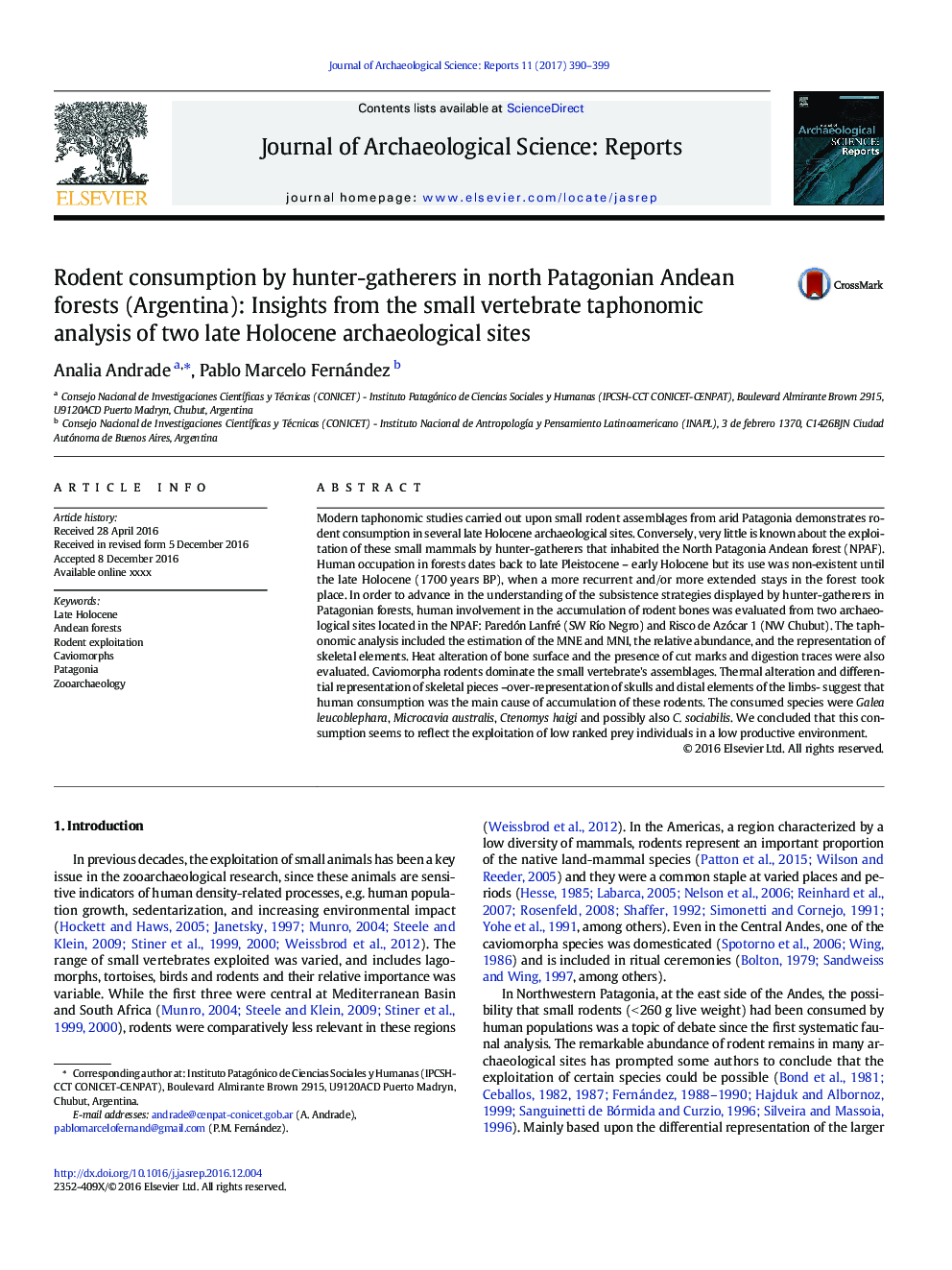| کد مقاله | کد نشریه | سال انتشار | مقاله انگلیسی | نسخه تمام متن |
|---|---|---|---|---|
| 5112573 | 1483932 | 2017 | 10 صفحه PDF | دانلود رایگان |
عنوان انگلیسی مقاله ISI
Rodent consumption by hunter-gatherers in north Patagonian Andean forests (Argentina): Insights from the small vertebrate taphonomic analysis of two late Holocene archaeological sites
ترجمه فارسی عنوان
مصرف جوجه های گوشتی توسط شکارچیان در جنگل های اندونز شمالی پاتاگونانی (آرژانتین): بینش از تجزیه و تحلیل تخت های کوچک مهره دار دو سایت های باستان شناسی هولوسن
دانلود مقاله + سفارش ترجمه
دانلود مقاله ISI انگلیسی
رایگان برای ایرانیان
کلمات کلیدی
موضوعات مرتبط
علوم انسانی و اجتماعی
علوم انسانی و هنر
تاریخ
چکیده انگلیسی
Modern taphonomic studies carried out upon small rodent assemblages from arid Patagonia demonstrates rodent consumption in several late Holocene archaeological sites. Conversely, very little is known about the exploitation of these small mammals by hunter-gatherers that inhabited the North Patagonia Andean forest (NPAF). Human occupation in forests dates back to late Pleistocene - early Holocene but its use was non-existent until the late Holocene (1700Â years BP), when a more recurrent and/or more extended stays in the forest took place. In order to advance in the understanding of the subsistence strategies displayed by hunter-gatherers in Patagonian forests, human involvement in the accumulation of rodent bones was evaluated from two archaeological sites located in the NPAF: Paredón Lanfré (SW RÃo Negro) and Risco de Azócar 1 (NW Chubut). The taphonomic analysis included the estimation of the MNE and MNI, the relative abundance, and the representation of skeletal elements. Heat alteration of bone surface and the presence of cut marks and digestion traces were also evaluated. Caviomorpha rodents dominate the small vertebrate's assemblages. Thermal alteration and differential representation of skeletal pieces -over-representation of skulls and distal elements of the limbs- suggest that human consumption was the main cause of accumulation of these rodents. The consumed species were Galea leucoblephara, Microcavia australis, Ctenomys haigi and possibly also C. sociabilis. We concluded that this consumption seems to reflect the exploitation of low ranked prey individuals in a low productive environment.
ناشر
Database: Elsevier - ScienceDirect (ساینس دایرکت)
Journal: Journal of Archaeological Science: Reports - Volume 11, February 2017, Pages 390-399
Journal: Journal of Archaeological Science: Reports - Volume 11, February 2017, Pages 390-399
نویسندگان
Analia Andrade, Pablo Marcelo Fernández,
